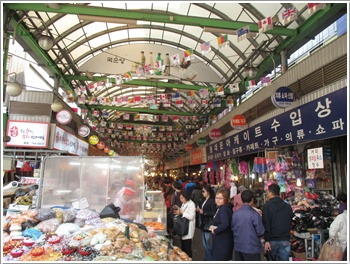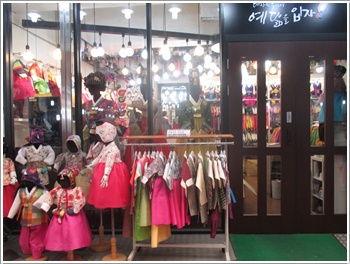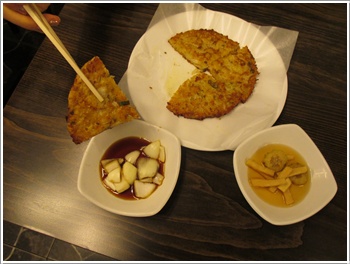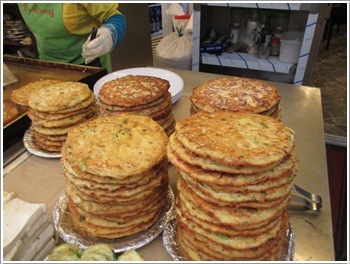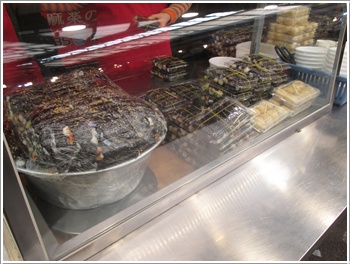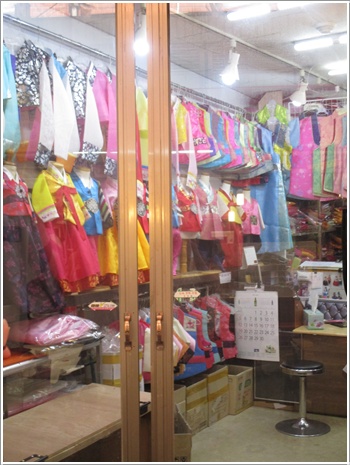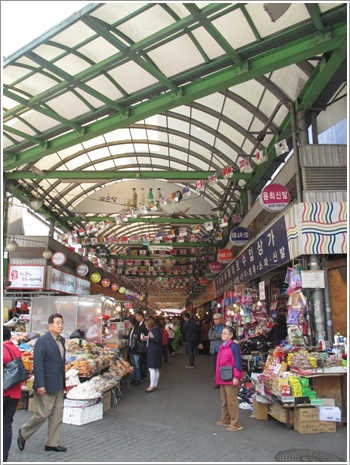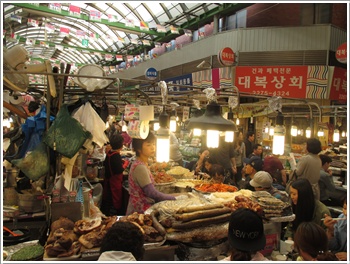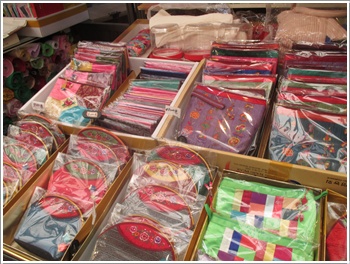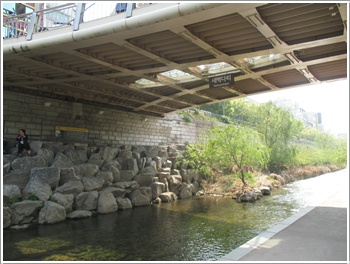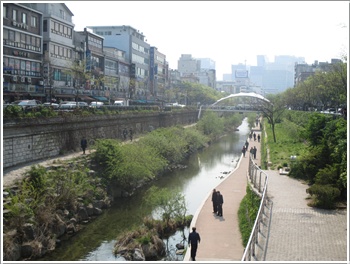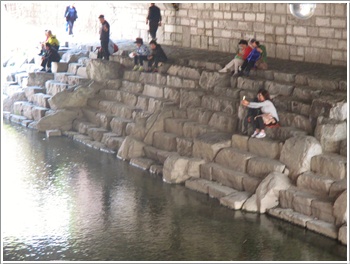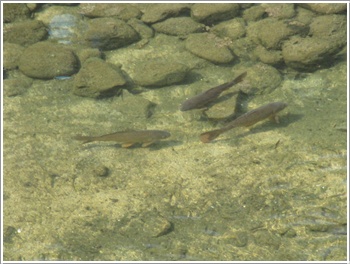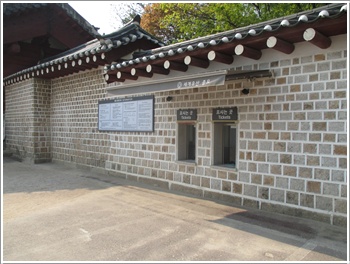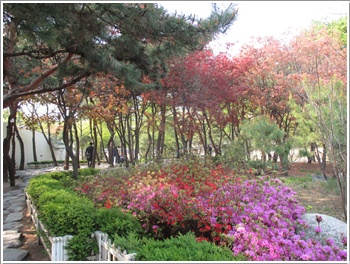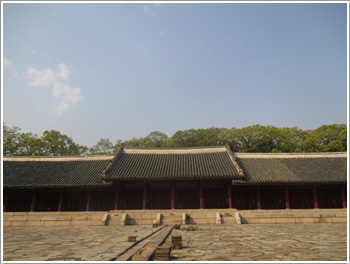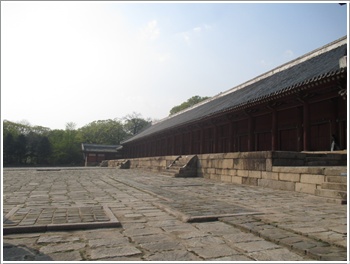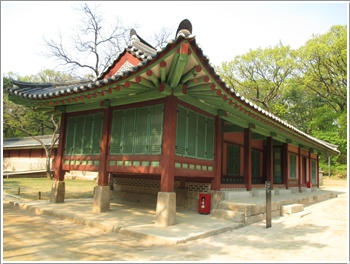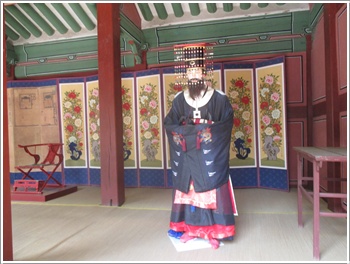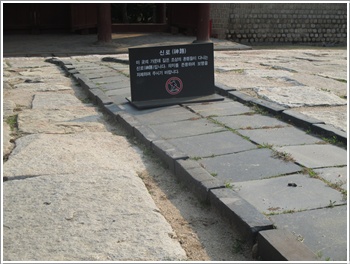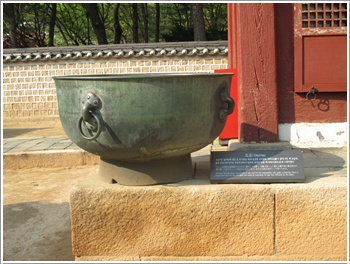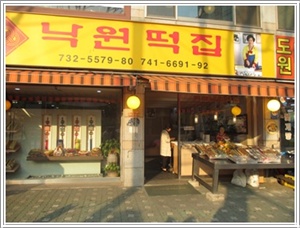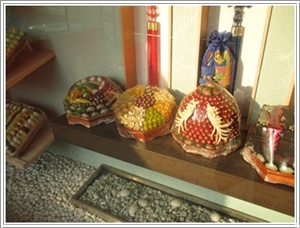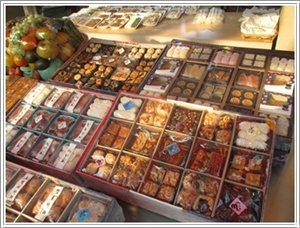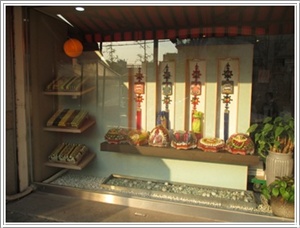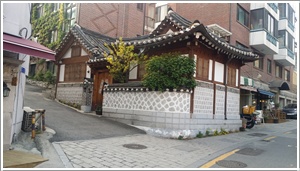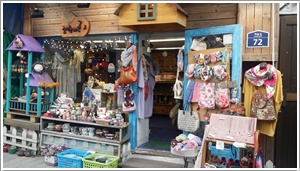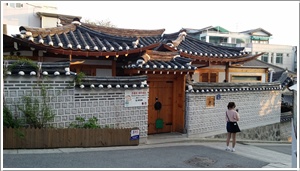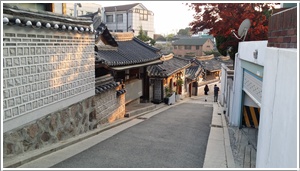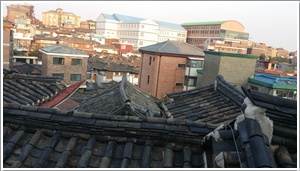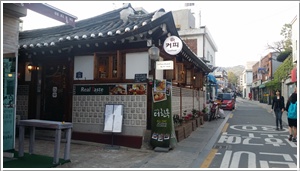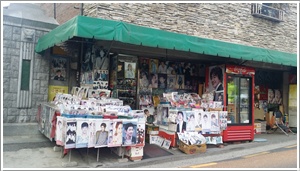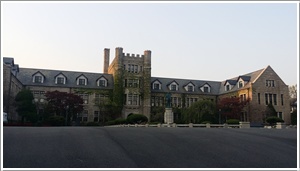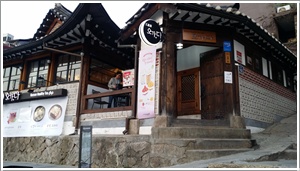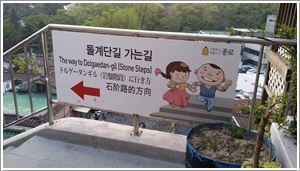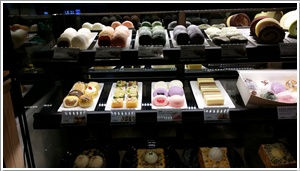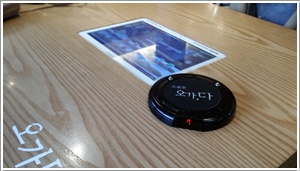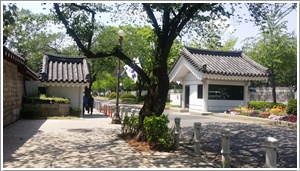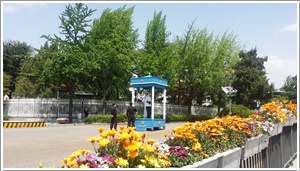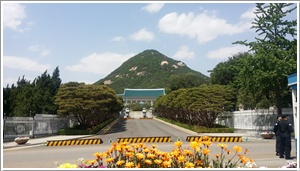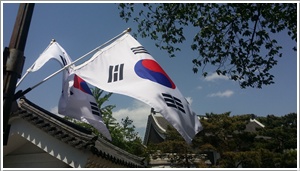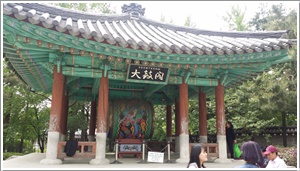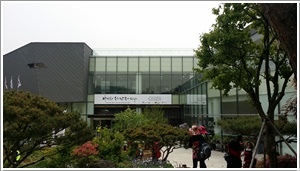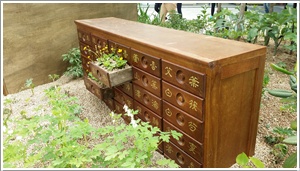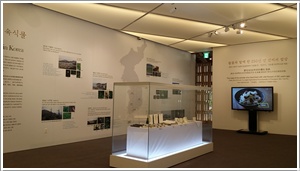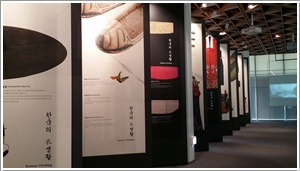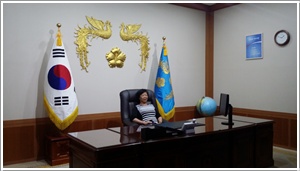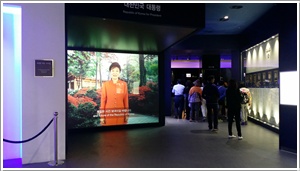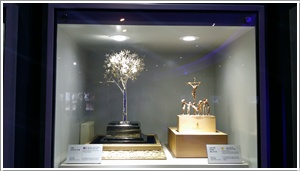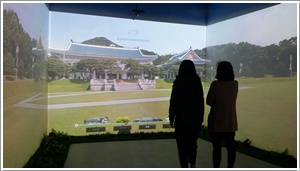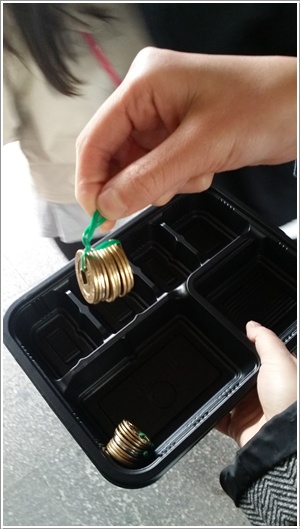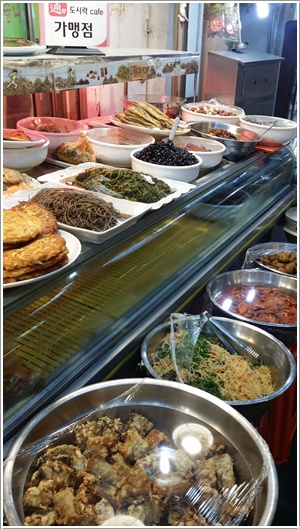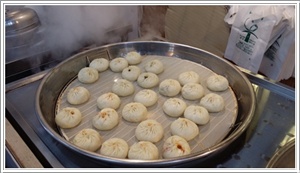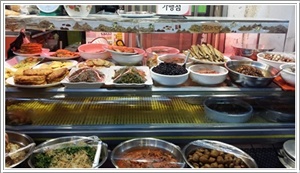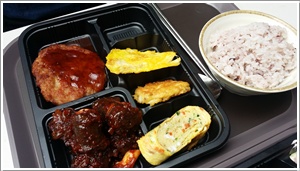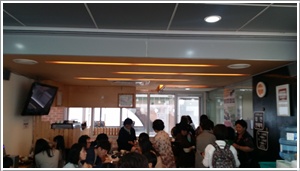CHEONGGYECHEON STREAM
Cheonggyecheon is a stream flowing from west to east through Seoul and really popular among residents and tourists. Before it was restored in 2005, it was only a neglected water path covered with concrete for roads. Now that it has been reconstructed it procures a natural path linking Deoksugung Palace, Seoul Plaza, the Sejong Center, Insa-dong Street, Changdeokgung Palace, and Changgyeonggung Palace. Therefore it allows tourists to take a nice stroll while visiting the main attractions of the city. Its sidewalks are beautifully arranged with nice touches of greenery. Under the low bridges you can also find places to rest in the freshness as well as outside exhibitions.
Jongmyo is a Confucian Shrine dedicated to the perpetuation of memorial services for the deceased kings and queens of the Korean Joseon Dynasty (1392–1897). It was classified by the UNESCO as World Cultural Heritage site in 1995 because it is said to be the oldest royal Confucian shrine to have preserved ancient customs such as memorial services “Jongmyo Jerye” (performed for 600 years) and traditional music “Jongmyo Jeryeak”. Jongmyo is made of two main buildings: the main hall “Jeongjeon” and the hall of eternal peace “Yeongnyeongjeon”; and auxiliary buildings such as “Jeonsacheong”,“Eosuksil”, “Hyangdaecheong” and “Sindang”. The main Hall is said to be the longest wooden structure in the world mainly because rooms had to be added to contain more memorial tablets.
In comparison to the royal palaces the architecture is more uncluttered and simple which gives the whole structure a more solemn look. It is a really peaceful place which blends in its natural surrounding with harmony.
The Jongmyo Shrine can only be visited at specific time in group for a guided tour which is really nice because it allows you to get a better understanding of the place and its spiritual meaning.
During the visit you will notice signs telling not to step on the middle path on the three path way “Samdo”. It is because originally the east path was reserved to the king, the west path was reserved to the crown prince and the one in the middle was for the spirits of the royal ancestors. Therefore to respect the tradition and honor the royal ancestors it is still not allowed to walk on the middle part of the path.
NAKWONDONG KOREAN RICE CAKE EXPERIENCE
Nakwondong is the most famous street for Korean rice cake shop in Korea.
Bukchon, also known as the “North Village“ is, as you would guess, located in the North part of Seoul, on small hill between Jongro street and Cheongyecheon. Surrounded by Gyeongbok Palace on its left and Changdeok Palace on his right it managed to survive the incredible modernization of the city and remains one of the most beautiful traditional district of Seoul.
As we arrived from Changdeok Palace, we were impressed right away by the harmonious combination of traditional and modern architecture. As we ventured further inside the neighborhood we discovered so many beautiful alleys that we just wished we had hours to wanders through them all. Bukchon seems to be like a magical maze offering beautiful sceneries at each corner. Walking the streets we encountered between the traditional Korean Hanok houses many pretty little shops selling accessories, flowers and handcrafted gifts.
Among those shops we could also notice beautifully decorated cafés, small restaurants and guest houses. After a few minutes walking we could perceive a strong influx of high schoolers in our direction, and finally we reached Joongang high school. Located upon the Hill, the high school is really famous because it was one of the filming locations of the drama “Winter Sonata”. Even though it is surrounded by two kpop shops, I have to confess that the main entrance is just splendid. Mesmerized by the view we decided to quietly go a bit further inside even though we had already passed the opening hours.
Facing the entrance of the school we decided to continue our stroll on the left and entered the beautiful maze once again.
At this point we were on the upper part of the hill and between the houses we could appreciate the breath taking sight of the traditional houses’ roofs. The contrast between modernity and tradition was really interesting and inspiring.
Around the streets we encountered local residents seeing to their daily routine, tourist, lovers but also a couple shooting their wedding pictures.
As we lost our tracks we found ourselves in front of the House of Song Hye Jin in “Personal Taste” and next to it the House that the previous president Lee Myung Bak occupied before being elected.
SAMCHEONG-DONG STREET
When we finally reached the top of the hill we were able to witness the busy life of the city: the small streets flowing between the traditional houses, shops and coffee shops; the green mountains in the background; the busy seoulites hasting themselves among the tourists trying to find their way while sightseeing. Along the Road, signs were indicating the way to dolgaedan-gil (stone steps) to reach Samcheong-dong below. Going down between the Hanok houses we reached a staircase carved in one single piece of rock and eventually ended up on Samcheong-dong Main Street.
Tired out by those long hours walking the streets we decided to stop at the Hanok Café at the bottom of the stairs, The O.Ga.Da café. The O.Ga.Da café offers a large choice of coffee and tea with for example 5 different types of Omija Tea as well as a large selection of pastries.
Moreover, the staff is really nice and will do their best to satisfy their clients. Even though it is located in a traditional Hanok house all the tables are equipped with tabs allowing people to play games while enjoying their beverage and pastries whether they are in groups or alone.
We ordered a cup of traditional Omija Tea and Korean shaved ice dessert, Patbingsu. The tea was served with a traditional flower shaped pastry called yakgwa, in a glass cup highlighting its red color. The Patbingsu, a dessert made of shaved ice, condensed milk, red bean paste and rice cakes was not too sweet so we could easily enjoy the taste of each ingredients.
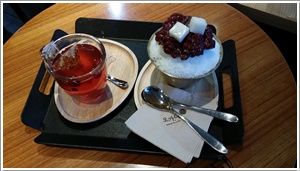
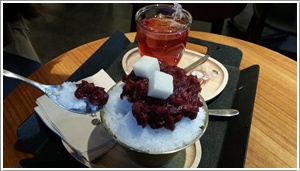
THE BLUE HOUSE
After a moment of leisure at the cafe we walked down Samcheong-dong street to reach the community service center and turned right. at the beginning of the street a police barrage was set and a police officer was stopping each car to ask the conductor's destination. A number of serious man in black as you would see in spy movies and police officers were watching the area so it felt really safe there. It was a really beautiful day to walk, the sun was shining in the sky, the trees were waving about and the flags were flying in the wind. The big alley was almost free from cars but the sidewalks were crowded with tourists. walking along the wall of Gyeongbok Palace we finally reached in gigantic old door. Across from there you could easily spot the presidential house set at the bottom of the mountain with its unique blue tiled roof. It was really impressive to see!
CHEONGWADAE SARANGCHAE
after contemplating for a bit we kept going down the alley to reach Cheongwadae Sarangchae. Cheongwadae Sarangchae is a museum dedicated to the Korean culture and the history of Korean presidents. when you go there you will firstly find a plaza with a giant statue of a phoenix. The phoenix is really important in the Korean imagery because it used to represent the King. In front of the building of the museum you will find a small garden beautifully decorated with traditional Korean objects.
On the first floor you will find exhibitions about the Korean general history and culture but also a souvenir shop which provides a lot of gorgeous gifts for your relatives, friends or even yourselves.
The second floor is reserved to a permanent exhibition on the presidents of South Korea. There you will find a giant screen on which the actual president will welcome you into Cheongwadae Saranchae. You will also find the portraits of the former presidents in genealogical order but also gifts they received from other countries' leaders and personal belongings.
This place is really interesting because it doesn't only offer historical information but also procures visitors a number of interactive spaces. Indeed you can find a reproduction of the Presidential seat, or a simulator on which you can virtually walk inside The garden of the Blue House. On this floor you will also find a place dedicated to kids where they can take 3D pictures.
TONG-IN MARKET
Following the Avenue on the left side again we finally reached Hyoja-dong after going through the police barrage. As we were getting hungry we decided to find a place to eat and decide to walk toward the Tong-in Market which is really famous for its Lunch Box cafe. In fact Tong-in Market is a food market where you will find a lot of fruits, vegetables and side dishes shops. However in a market you can't just buy the amount of side dishes you want to eat so shop owners decided to collaborate and to created a new system which is called the lunch box cafe.
The idea is simple, you go the cafe-which is located in the middle of the Market-and buy an empty lunch box with some "nyangs" for the amount you want. "Nyangs" are gold coins that you will trade with whatever you want to put in your lunch box in small quantities. for example you can buy a portion of tteokbokki for 2 Nyangs. This way you create your own lunch box and you can go back to the cafe to buy rice, soup and to find a seat to eat.
This system is really ingenious and the food is delicious! Plus, if you really liked a particular dish you can go back and buy a whole bunch of it with real money this time! It allows you to try various food and help the shops' owners advertise their products.
Full as we were we decided to say our goodbyes there and promised to meet for another adventure in Seoul!








